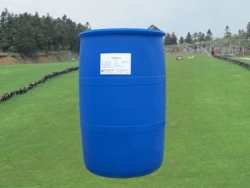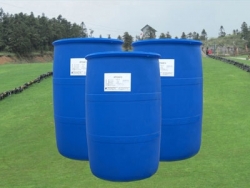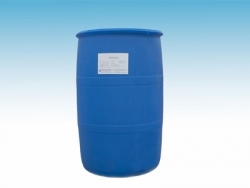In the past two years, the Ministry of Science and Technology, two major oil companies, PetroChina and Sinopec have organized a series of research projects on surfactant mixing, organized a series of research projects in large oil fields, scientific research institutes and universities, and achieved some basic research results. In the surfactant flooding systems of Zhongyuan Oilfield, Changqing Oilfield, Dagang Oilfield and Yanchang Oilfield, several low permeability reservoirs have been selected for field tests, and the effect of enhancing oil recovery is obvious. In Zhongyuan Oilfield, the study on the oil displacement efficiency of composite

surfactant shows that the oil displacement efficiency in formation water is 7.68% higher than that in petroleum sulfonate. Shengli Oilfield has developed a low-cost composite surfactant for oil displacement in Zhuangxi high-temperature, medium-low permeability reservoir. The exploratory application test of this surfactant was carried out in Zhuangzhuang 50 well group No. 5 in 2006. As of May 2007, 6 wells in this group have increased oil production by 1656 tons. Chinese style
But up to now, there is still a long way to go for surfactant flooding at home and abroad from the stage of large-scale application of polymer flooding, mainly because of the high cost and the inconspicuous profit; secondly, it is necessary to select suitable surfactants according to different reservoir characteristics, which limits the large-scale production of surfactants. Application. Therefore, the research and development of surfactant flooding system with high performance and low cost is the inevitable trend of the development of petroleum industry. A kind of

The characteristics of low permeability reservoirs are as follows:
1) Many faults and complex structures, small oil-bearing area, many layers, large thickness, many faults and complex structures are the basic characteristics of such oilfields. Because of many faults and compactness, reservoirs are often divided into isolated small fault-block oilfields. The oil-bearing area is relatively small, but the thickness of multiple layers does not change much, ranging from several meters to tens of meters, or even hundreds of meters. _

2) The physical properties of reservoirs vary greatly, with small pore size, large specific surface area and low permeability. Small pore and micro-micro throat are dominant in low permeability reservoirs. The average throat diameter is 26-43 m, the median pore-throat radius is 0.1-2.0 m, and the specific surface area is 2-20 m2/g. Reservoir pore throat is small and specific surface area is large, which directly forms the result of low permeability, which is the fundamental reason for a series of production and production of low permeability reservoirs. A kind of
3) Seepage characteristics do not follow Darcy's law. Low permeability reservoirs do not obey Darcy's law because of small pore, large specific surface area and reservoir boundary thickness, strong Jiamin effect and surface molecular force, and their seepage law does not obey Darcy's law, and non-Darcy's seepage characteristics are obvious. The lower the permeability, the greater the starting pressure gradient. _
4) Low elastic energy, low permeability reservoirs due to poor reservoir connectivity, low flow resistance, generally inactive edge and bottom water, elastic energy is very small. Except for a small number of abnormally high pressure reservoirs, the elastic recovery is only 1% to 3%.